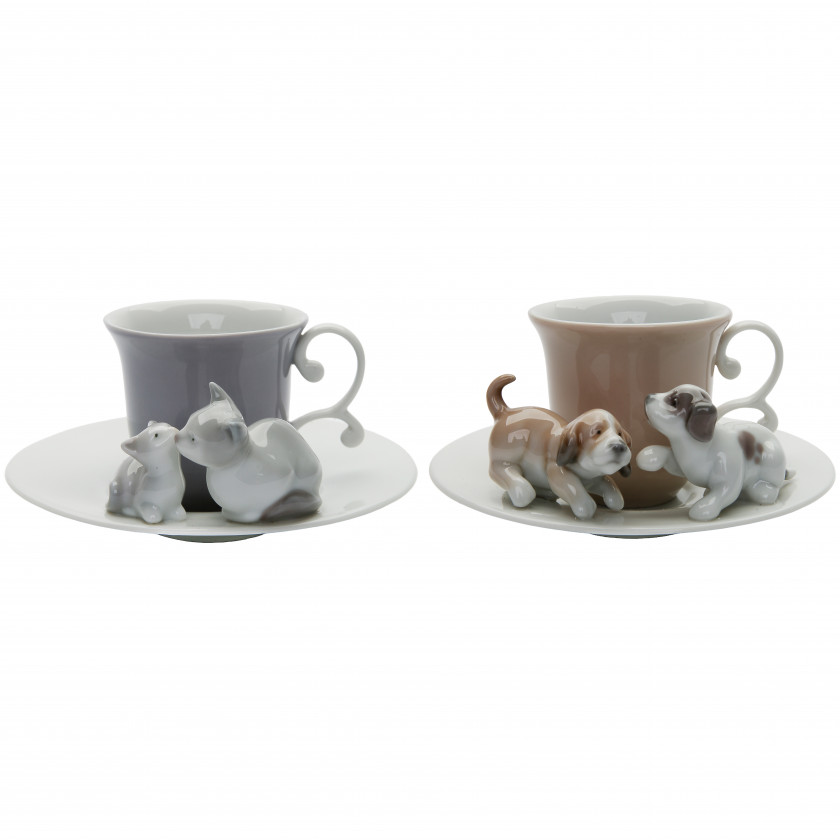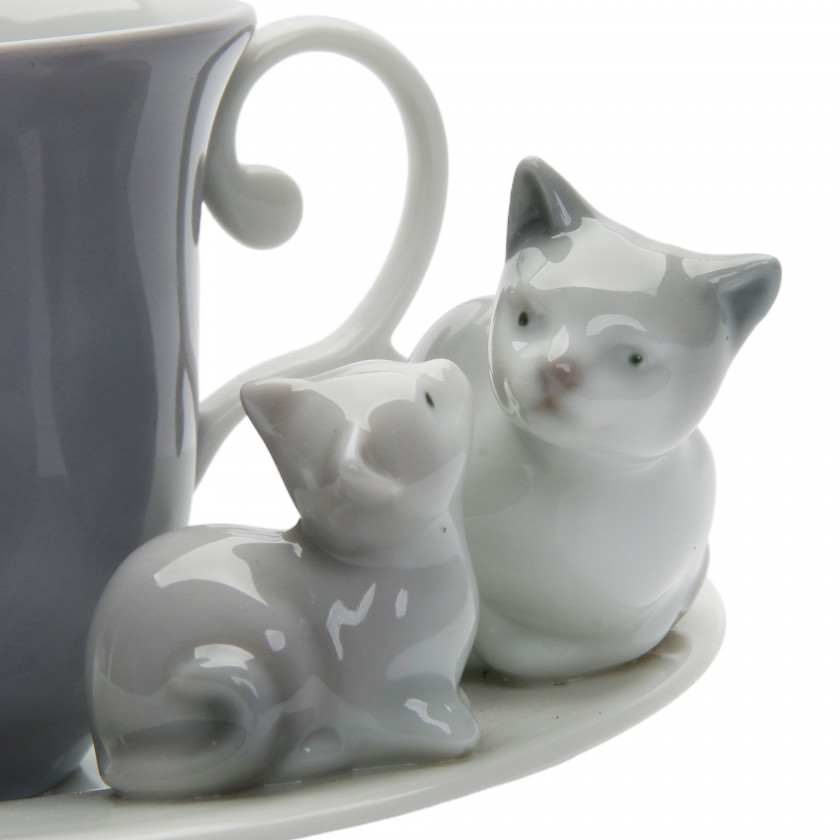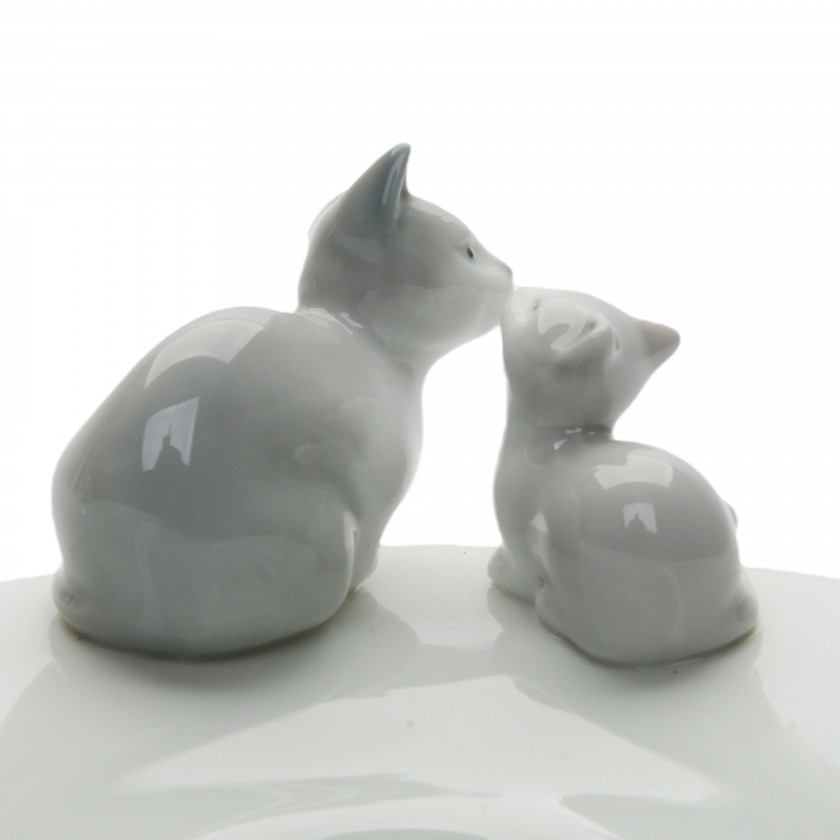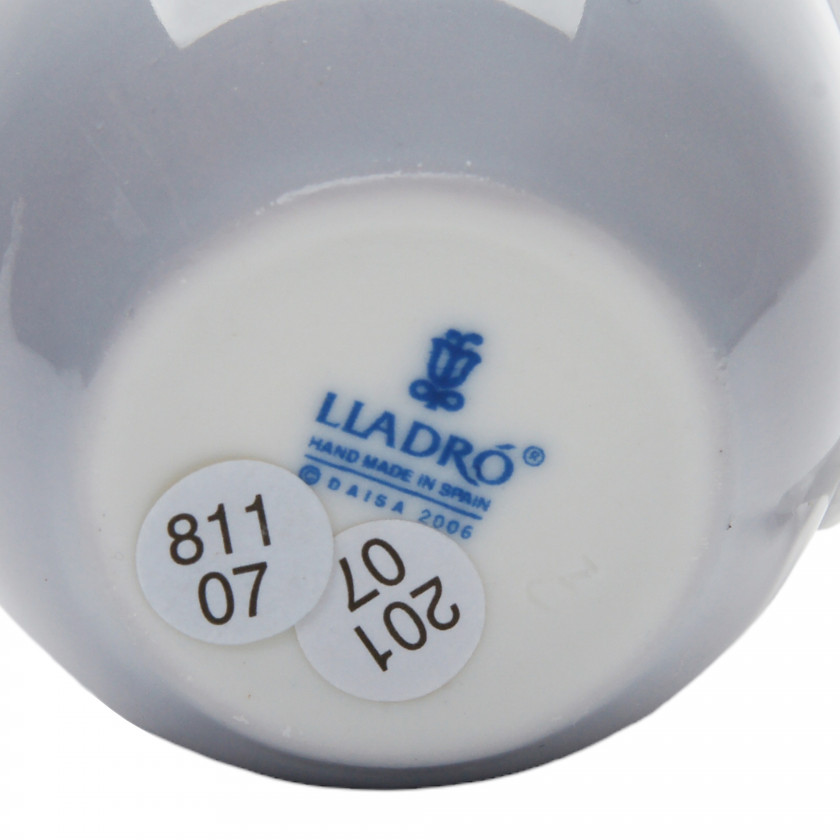Пара фарфоровых кофейных чашечек с блюдцами "Счастливое чаепитие"
-
560.00 EUR
Автор/Изготовитель: Lladró
Года жизни/Период работы: 1953 - настоящее время
Место Изготовления: Испания, Валенсия
Дата Изготовления: начало 21 века
Материалы: подглазурная ручная роспись, фарфор
Высота кружки: 6 см.
Диаметр блюдца: 13 см.
Номер модели: 01008300
Состояние:
Описание
Фарфоровая фабрика Lladró является одним из наиболее престижных производителей художественного фарфора в мире. Она была основана в 1953 году тремя братьями: Хуаном, Хосе и Викенте Лладро в городе Альмацоре, вблизи Валенсии, в Испании.
Братья Лладро проявляли интерес к скульптуре и ремеслу с детства. Их отец был керамистом, и они научились искусству работы с глиной и созданию керамических фигур. В 1951 году они начали работать в местной фабрике керамики, но вскоре решили основать свою собственную фабрику, чтобы воплотить свои идеи и творческие концепции.
С самого начала Лладро сосредоточилась на создании художественных фарфоровых фигур, которые были необычными в своей красоте и утонченности. Братья Лладро внимательно изучали технику и традиции изготовления фарфора, а также совершенствовали свои навыки скульпторов. Их целью было создание уникальных и прекрасных произведений искусства, которые могли бы восхищать людей.
Первые работы Лладро были выполнены в традиционном стиле, но вскоре они начали вносить инновации в свои творения. Они разработали собственные методы и техники для создания более сложных деталей и рельефов на фарфоровых изделиях. Их фигуры отличались высоким качеством и мастерством исполнения.
В 1958 году Лладро представила свою первую коллекцию на международной выставке в Валенсии, которая была встречена с огромным успехом. Это стало отправной точкой для международного признания и популярности фабрики. Лладро стала экспортировать свои изделия в разные страны и получала все больше заказов.
В 1960-е годы Лладро продолжала инновировать и развивать свое искусство. Они начали использовать новые материалы и техники для создания фарфоровых изделий, таких как использование прозрачного эмалированного фарфора, который придавал фигурам особый блеск и эффект. Они также экспериментировали с различными оттенками и оттенками красок, чтобы достичь более реалистичного и живого вида своих работ.
В 1970-е годы Lladró расширилась и стала покорять новые рынки. Ее изделия стали пользоваться большим спросом в США, Европе, Азии и других частях мира. Коллекции Lladró продолжали впечатлять своей элегантностью, изысканностью и детализацией.
В 1980-х годах Lladró начала сотрудничество с известными художниками и дизайнерами, чтобы создавать специальные коллекции. Среди них были Хосе Пучо, Хуан Хименес, Рафаэль Лоэн, Хавьер Молина и другие. Это позволило фабрике Lladró совмещать свою технику и ноу-хау с талантами ведущих художников и создавать поистине уникальные и ценные произведения искусства.
В 1992 году Lladró выпустила свою самую известную фигуру "Дон Кихот", которая стала символом компании. Эта фигура, изображающая легендарного героя Мигеля де Сервантеса, стала популярной во всем мире и стала одной из самых узнаваемых работ Lladró.
Сегодня фабрика Lladró продолжает быть одним из самых авторитетных и престижных производителей художественного фарфора в мире. Их работы можно увидеть во многих музеях и коллекциях их поклонников. Lladró продолжает искать новые способы инноваций и развития, сохраняя традиции ручной работы и высокого качества, которые сделали их брендом лидером в отрасли.
Информация о доставке
- Войдите, чтобы увидеть стоимость доставки этого предмета на ваш адрес.
Способы доставки определяются по размерам предмета, типом, хрупкостью и конкретными характеристиками.
Стоимость доставки рассчитывается на основе тарифов перевозчика, расстояния доставки и сложности упаковки.
Детали платежа
Doma Antikvariāts принимает следующие способы оплаты:











